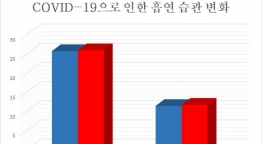Abstract
Background/Aims
Fecal calprotectin (FC) is known to correlate with disease activity and can be used as a predictor for relapse or treatment response in inflammatory bowel disease (IBD). We evaluated the usefulness of FC as a biomarker for disease activity in patients with IBD using both enzyme-linked immunosorbent assay (ELISA) and a quantitative point-of-care test (QPOCT).
Methods
Fecal samples and medical records were collected from consecutive patients with IBD. FC levels were measured by both ELISA and QPOCT and patient medical records were reviewed for clinical, laboratory, and endoscopic data.
Results
Ninety-three patients with IBD were enrolled, 55 with ulcerative colitis (UC) and 38 with Crohn's disease (CD). The mean FC-ELISA levels were 906.3 ± 1,484.9 μg/g in UC and 1,054.1 ± 1,252.5 μg/g in CD. There was a strong correlation between FC-ELISA level and clinical activity indices (p < 0.05). FC-ELISA level was significantly lower in patients with mucosal healing (MH) compared to those without MH in UC (85.5 ± 55.6 μg/g vs. 1,503.7 ± 2,129.9 μg/g, p = 0.005). The results from the QPOCT corresponded well to those from ELISA. A cutoff value of 201.3 μg/g for FC-ELISA and 150.5 μg/g for FC-QPOCT predicted endoscopic inflammation (Mayo endoscopic subscore ≥ 1) in UC with a sensitivity of 81.8% and 85.8%, respectively, and a specificity of 100% for both.
Conclusions
FC was strongly associated with disease activity indices, serologic markers, and endoscopic activity in patients with IBD. QPOCT can be used more conveniently than ELISA to assess FC in clinical practice.
자료제공: 대한내과회(http://www.kjim.org/journal/view.php?number=170014)
Copyright © 의약일보










